Barents Sea- a harsh border sea, which is located on the southern border of the Arctic Ocean and washes the north of the Eurasian continent.
Barents Sea
South part the sea washes the northern shores of the European coast - and a little Norway. There are from the east, New earth and Vaygach, from the west of Svalbard and Bear.
—
From the west, the sea is adjacent to the Barents Sea and. In the south, it borders with and, in the east with. Northern borders Barents Sea go out to the Arctic Ocean.
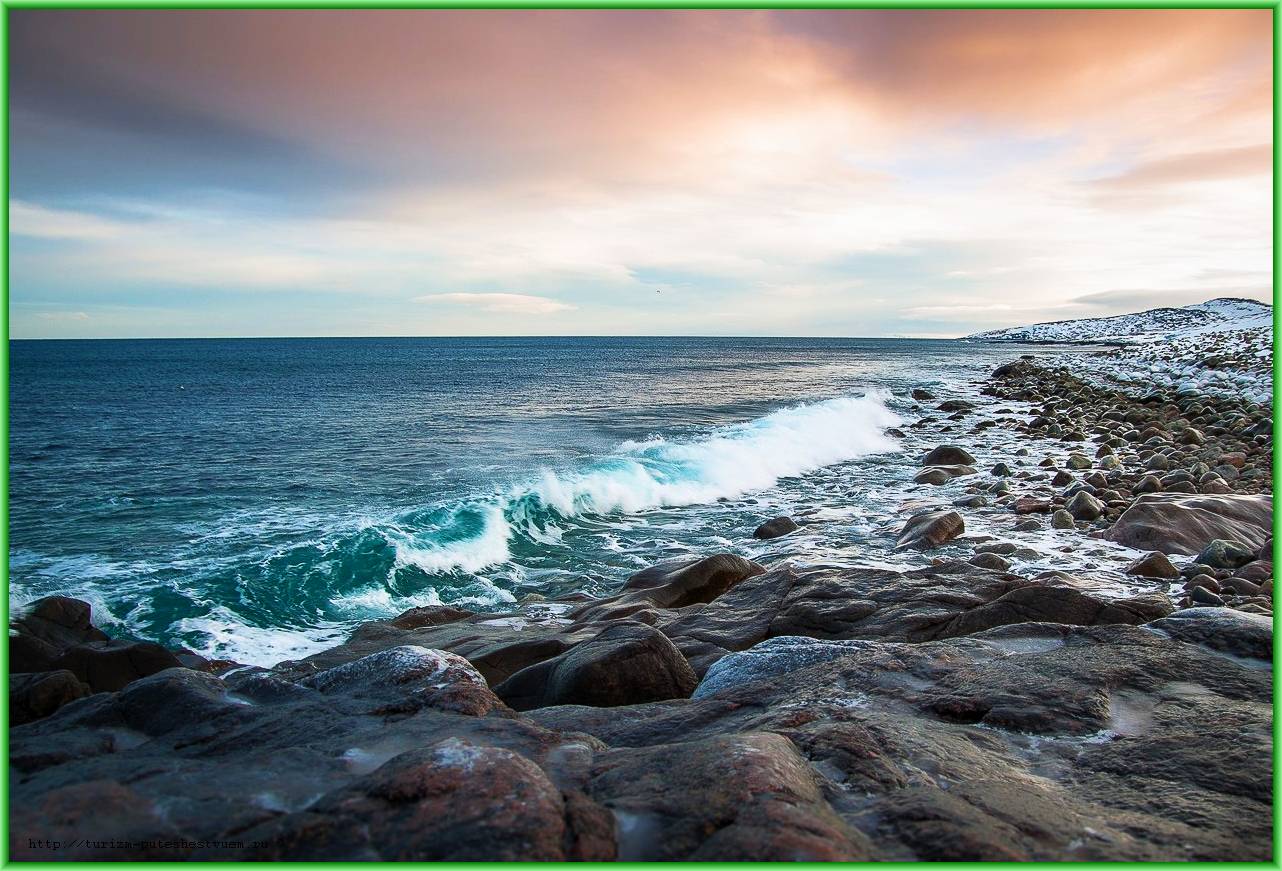 The coastline is heavily indented. The shores are rocky and high. There are many bays, of which the largest are Varazhsky, Kola, Porsanger-fluorde and Motovsky. But as we move eastward, the situation changes. After the Kanin Nos peninsula, the shores become slightly indented and very low. There are three large, but rather shallow-water bays: Khaipudyrskaya Bay, Pechora Bay, Czech Bay.
The coastline is heavily indented. The shores are rocky and high. There are many bays, of which the largest are Varazhsky, Kola, Porsanger-fluorde and Motovsky. But as we move eastward, the situation changes. After the Kanin Nos peninsula, the shores become slightly indented and very low. There are three large, but rather shallow-water bays: Khaipudyrskaya Bay, Pechora Bay, Czech Bay.
There are few islands in the Barents Sea. The largest is Kolguev Island. Of the rivers flowing in, the largest are Indiga and Pechora.
Barents Sea bottom relief
The Barents Sea is located on the continental shelf, but differs from other similar seas. The greatest depth is up to 400 meters, and the average is at around 222 meters. The most deep point the sea is located in a gutter near Bear Island and reaches 600 meters. The southern part of the seabed is mostly flat with an average depth of about 200 meters.
Currents in the Barents Sea
Sea currents form a kind of circulation. One part of this cycle, the warm North Cape Current, moves from the south and east to the north and west and reaches the shores of Novaya Zemlya Island. The other part is made up of cold Arctic waters that come from the Arctic Ocean and Kara Sea.
Salinity of Barents water
The salinity of waters on average in all parts of the sea is kept approximately in the same range from 30 to 35%. Moreover, the highest salinity is in the southwest, and the smallest in the north. Near the coast, salinity varies from 30 to 32% in summer and spring, and increases to 34.5% in winter.
Climatic conditions
Climatic conditions are influenced by and. Frequent warm cyclones interacting with cold arctic air cause great variability in weather conditions. From March to August, north-easterly winds prevail, from September to February, south-westerly ones. Storms are also very frequent in the Barents Sea. The temperature in cold weather (in February) drops to -25 degrees Celsius in the northern part and to -4 in the south-western part. Up to 500 ml can fall out here a year. precipitation.
Sea ice cover
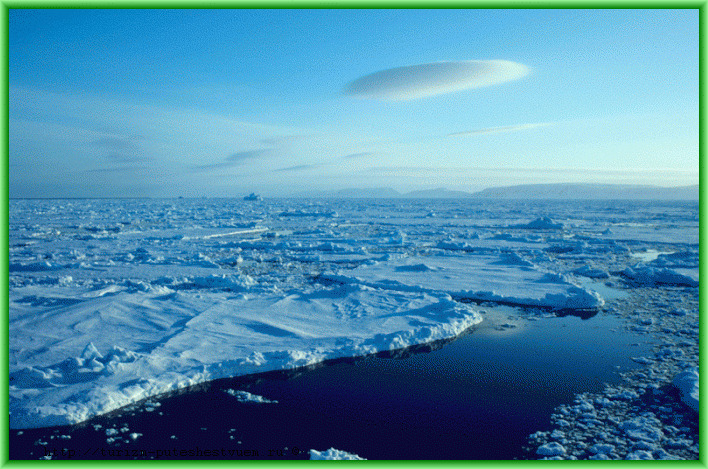 Regardless of the season, they cover almost the entire territory of the sea. Only the southwestern part remains free. In April, more than 75% of the Barents Sea is covered with floating ice. Sometimes it happens that the ice reaches even the coast of the Kola Peninsula. The decrease in the amount of ice occurs in August. But in the north, ice continues to hold all year round.
Regardless of the season, they cover almost the entire territory of the sea. Only the southwestern part remains free. In April, more than 75% of the Barents Sea is covered with floating ice. Sometimes it happens that the ice reaches even the coast of the Kola Peninsula. The decrease in the amount of ice occurs in August. But in the north, ice continues to hold all year round.
Water temperature in Barents
Due to the flow of warm water from Atlantic Ocean, in the southwestern part of the Barents Sea, high water temperature and salinity are determined. From February to March, the temperature is 3 degrees Celsius, and in August it rises to 9 degrees. In the northern and southeastern parts of the sea, temperatures drop to -1 degrees Celsius at the surface. In summer, it reaches 4 degrees. The coastal zone in the summer warms up to 12 degrees above zero.
Barents flora and fauna
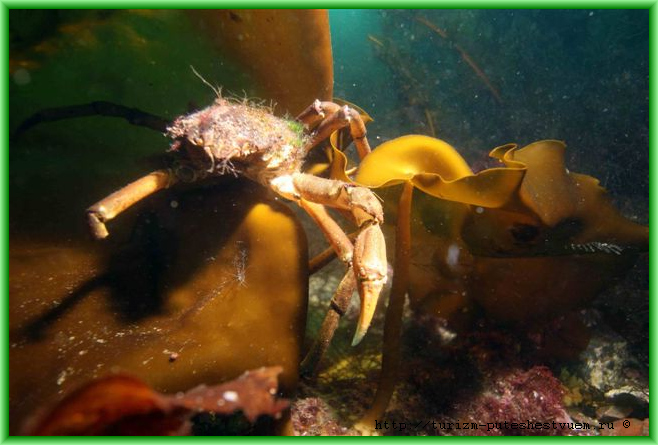 The Barents Sea is very abundant in a variety of fish species, animal and plant plankton, as well as benthos. Near the southern coast, there are large thickets of seaweed.
The Barents Sea is very abundant in a variety of fish species, animal and plant plankton, as well as benthos. Near the southern coast, there are large thickets of seaweed.
There are 114 in the waters of the sea different types fish. Of these, 20 species are of the greatest commercial value. Among them are sea bass, flounder, halibut, catfish, cod, herring, haddock and many others.
Among the mammals, the seal, beluga, harp seal, polar bear, etc. can be distinguished. Of the mammals, the seal is valued commercially.
The coasts of the sea are dotted with bird colonies, among which you can find gulls, kittiwakes and guillemots.
In the twentieth century, a crab was brought from Kamchatka, which was able to adapt to new conditions and begin to actively reproduce. The bottom is inhabited by many different species of echinoderms, sea stars and urchins.
The Barents Sea, despite its severity, is one of the most beautiful and richest on our planet. Now, when it begins to develop, I am sure that routes along this sea will soon become available to everyone. Having gone there, you will not bask on the hot sand, but a lot of positive emotions and wonderful memories are provided for you.
Barents Sea - washes the northern coast of the Scandinavian and Kola Peninsula, Norway and Russia. It is the marginal sea of the Arctic Ocean.
From the north, Franz Josef Land is bounded by archipelagos, and from the east by the Novaya Zemlya archipelago.
The area of the Barents Sea is 1424 thousand sq. Km. Volume - 282 thousand cubic meters km. Depth: average - 220 m. Maximum - 600 m. Borders: in the west with the Norwegian Sea, in the south with the White Sea, in the east with.
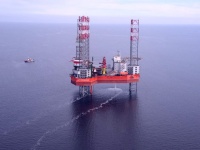
 Watchman on ...
Watchman on ...
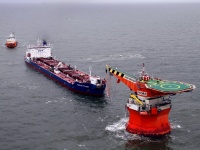 Oil from the bottom ...
Oil from the bottom ...
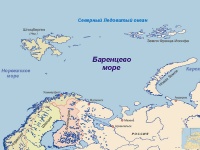
The northern seas have long attracted the Russian people with their riches. The abundance of fish, sea animals and birds, despite the icy water, long and cold winters, made this region quite suitable for a well-fed living. And when a person is full, then he does not care about the cold.
In ancient times, the Barents Sea was called the Arctic, then Siversky or Northern, sometimes it was called Pechora, Russian, Moscow, but more often Murmansk, after the old name of the Pomorsky (Murmansk) edge of the earth. It is believed that the first Russian boats sailed in the waters of the Barents Sea in the 11th century. Around the same time, Viking boats began to swim here. And then in the north of Russia trading settlements began to appear, and fishing began to develop.
Before Russia acquired a full-fledged fleet capable of navigating the vastness of the northern seas, the northernmost Russian city was Arkhangelsk. Founded by decree of Tsar Ivan the Terrible in 1583-1584 near the Mikhailo-Arkhangelsk Monastery, the small town became the main Russian port where foreign sea vessels began to call. An English colony even settled there.
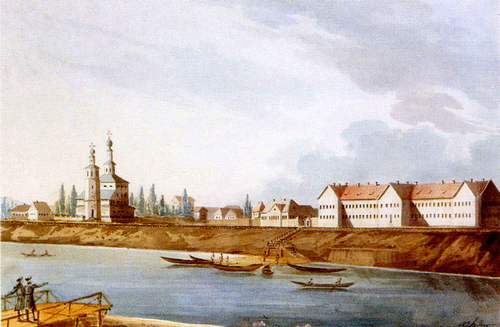
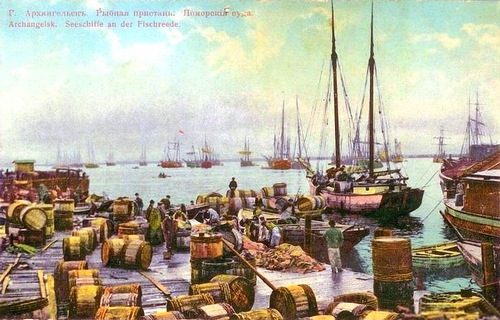
This city, located at the mouth of the Northern Dvina, which flows into the river, was very much attracted to Peter I, and over time it became the Northern Gate of Russia. It was Arkhangelsk who had the honor to play a leading role in the creation of the Russian merchant and navy. Peter in 1693 founded the Admiralty in the city, and laid a shipyard on the island of Solombala.

Already in 1694 the ship "St. Paul", the first merchant ship of the Russian Northern Fleet, launched from this shipyard. "St. Paul" had 24 cannons on board, which Peter personally cast at the plant in Olonets. To equip the first ship, Peter carved the rigging blocks with his own hands. Launching of "St. Paul" was carried out under the direct supervision of Peter. "St. Paul" was issued a "travel certificate" for the right to trade abroad. The ship "Saint Paul" was the first of six three-deck merchant ships launched from the sovereign's shipyard from 1694 to 1701. Since then, Arkhangelsk has become the center of all foreign trade activities The Russian state... It was from here that the Russian North began to develop.
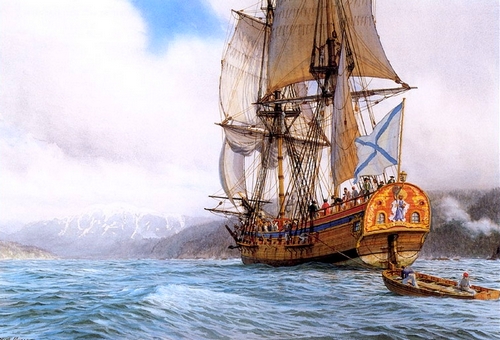
Of course, even before the time of Peter the Great, there were sailing directions for the mouth of the Northern Dvina, the White Sea and the coastal part of the Siversky Sea, which were inherited by local pilots. But under Peter, these maps were refined and made it possible to navigate fairly large ships without fear to run aground or reef, of which there are a great many in these waters.
These places were very attractive for navigation because of their peculiarity, because the sea here did not freeze, thanks to the Gulf Stream, whose warm waters reached these northern shores. This made it possible for ships to pass westward into the waters of the Atlantic and further south to the shores of America, Africa, and India. But the absence of sea-going ships and the short navigation time hindered the development of the waters of the North Sea. Only rare boats of brave sailors reached the shores of Svalbard and Franz Josef Land, separating the North Sea from the vast expanses of the Arctic Ocean.
The beginning of the study of the Barents Sea took place in the XVI-XVII centuries, in the era of the Great geographical discoveries... Searching for trade routes, European sailors tried to go east to go around Asia to get to China, but they could not go far due to the fact that most of it was covered with ice hummocks that did not melt even during the short northern summer. The Dutch navigator Willem Barentsz, in search of northern trade routes, very carefully explored the waters of the North Sea.
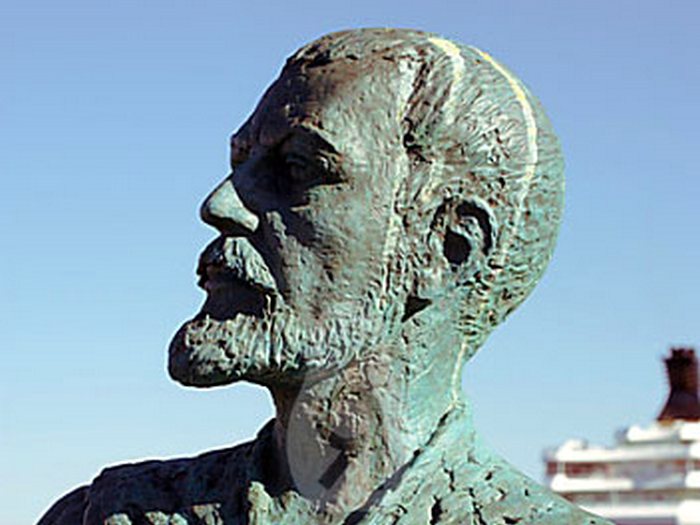
He discovered the Oran Islands, Bear Island, explored Svalbard. And in 1597 his ship froze into the ice for a long time. Barents and his crew left the ship frozen in the ice and began to make their way to the shore on two boats. And although the expedition reached the coast, Willem Barents himself died. Since 1853, this harsh North Sea began to be called the Barents Sea in his honor, although before that it was officially listed on the maps as Murmansk.
Scientific exploration of the Barents Sea began much later. 1821-1824 several sea expeditions were undertaken to study the Barents Sea. They were headed by the future president of the St. Petersburg Academy of Sciences, an honorary member of many Russian and foreign scientific institutions, a tireless navigator, Admiral Fyodor Petrovich Litke. In the sixteen cannon brig Novaya Zemlya, he went to the shores of Novaya Zemlya 4 times, investigated and described it in detail.

He investigated the depths of the fairway and dangerous shoals of the White and Barents Seas, as well as the geographical definitions of the islands. His book "Four-fold voyage to the Arctic Ocean on the military brig" Novaya Zemlya "in 1821-1824" published in 1828 brought him worldwide scientific fame and recognition. A complete thorough study and hydrological characteristics of the Barents Sea were drawn up during a scientific expedition in 1898-1901. headed by the Russian scientist hydrologist Nikolai Mikhailovich Knipovich.
The efforts of these expeditions were not in vain, as a result, the rapid development of navigation in the northern seas began. In 1910-1915. was organized by the hydrographic expedition of the Arctic Ocean. The purpose of the expedition was the development of the Northern Sea Route, which would allow Russian ships to pass the shortest route along the northern coast of Asia in Pacific Ocean to the eastern shores Russian Empire... The expedition consisting of two icebreaking steamers - "Vaigach" and "Taimyr" under the leadership of Boris Andreevich Vilkitsky passed the entire northern route from Chukotka to the Barents Sea, with wintering near the Taimyr Peninsula.
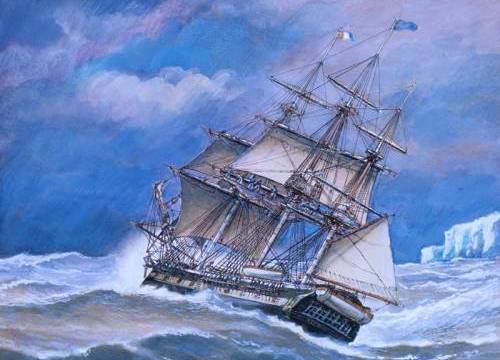
This expedition collected data on sea currents and climate, ice conditions and magnetic phenomena in these regions. A. V. Kolchak and F. A. Matisen took an active part in the development of the expedition plan. The ships were manned by naval officers and sailors. As a result of the expedition, a sea route was discovered that connected the European part of Russia with the Far East.
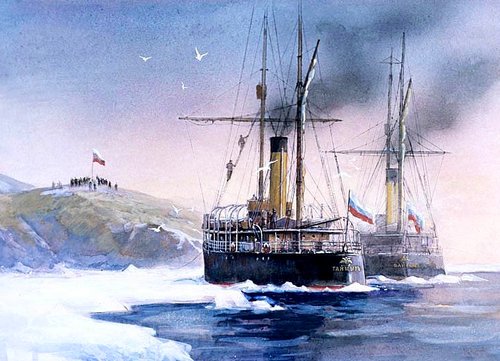
At the beginning of the twentieth century, measures were taken to equip the first port in the Arctic Circle. Murmansk became such a port. For the future port, they chose a very good place on the right bank of the Kola Bay. In 1915, during the First World War, Murmansk was upset and received the status of a city. The creation of this port city made it possible for the Russian fleet to gain access to the Arctic Ocean through an ice-free bay. Russia was able to receive military supplies from the allies, despite the blockade of the Baltic and Black Seas.

In Soviet times, Murmansk became the main base of the Northern Navy, which played a huge role in the victory of the USSR over Nazi Germany and the Great Patriotic War of 1941-1945. The ships and submarines of the Northern Fleet became the only force that, under the most difficult conditions, managed to ensure the passage of convoys that delivered military cargo and food for the Soviet Union from the allies.
During the war, the Severomors destroyed more than 200 warships and auxiliary ships, more than 400 transports and 1300 aircraft of Nazi Germany. They provided escort for 76 Allied convoys, including 1,463 transports and 1,152 escort ships.
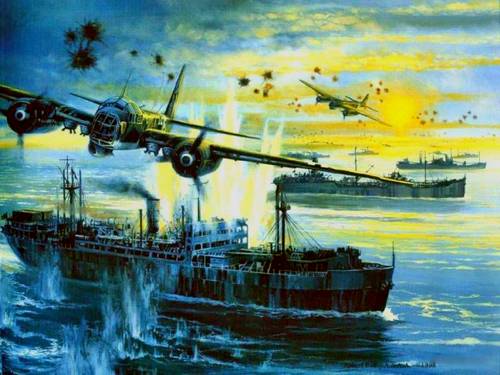
And now the Northern Fleet of the Russian Navy is based on bases located in the bays of the Barents Sea. The main one is Severomorsk, located 25 km from Murmansk. Severomorsk arose on the site of the tiny village of Vaenga, in which only 13 people lived in 1917. Now Severomorsk with a population of about 50 thousand people is the main stronghold of the northern borders of Russia.
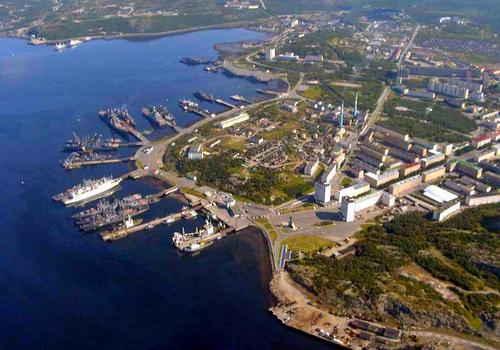
The best ships of the Russian Navy are in service in the Northern Fleet. Such as the aircraft-carrying anti-submarine cruiser "Admiral Kuznetsov"
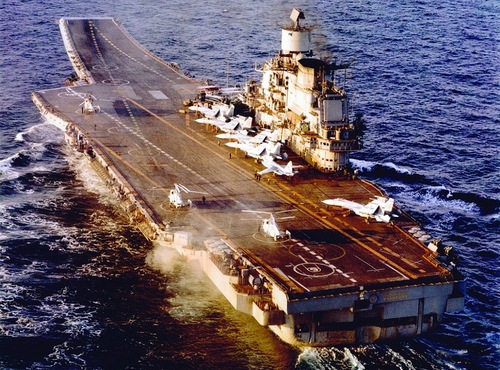
Nuclear submarines capable of surfacing directly at the North Pole
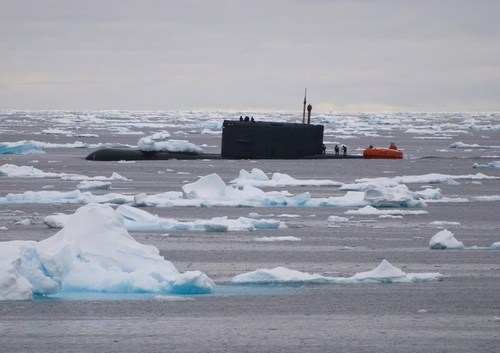
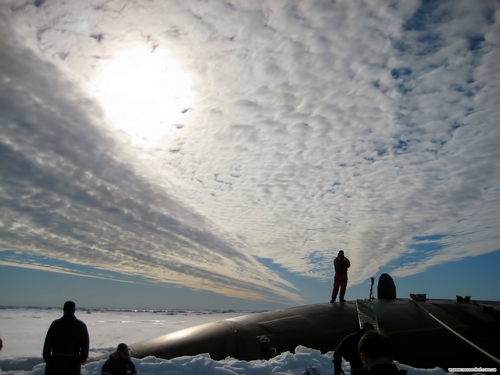
The water area of the Barents Sea also served the development of the military potential of the USSR. An atomic test site was created on Novaya Zemlya, and in 1961 a super-powerful 50-megaton hydrogen bomb was tested there. Of course, the entire Novaya Zemlya and the adjacent territory suffered greatly and for many years, but Soviet Union for many years received a priority in atomic weapons, which remains today.

For a long time, the entire water area of the Arctic Ocean was controlled by the Soviet Navy. But after the collapse of the Soviet Union, most of the bases were abandoned. All and sundry were drawn to the Arctic. And after opening largest deposits oil on the Arctic shelf, the question arose of protecting the Russian northern possessions possessing strategic raw materials. Therefore, since 2014, Russia has resumed its military presence in the Arctic. For this, the bases on Novaya Zemlya, on the Kotelny island, which is part of the New Siberian Islands, on the land of Franz Joseph, are being defrosted. Modern military camps are being built, airfields are being restored.


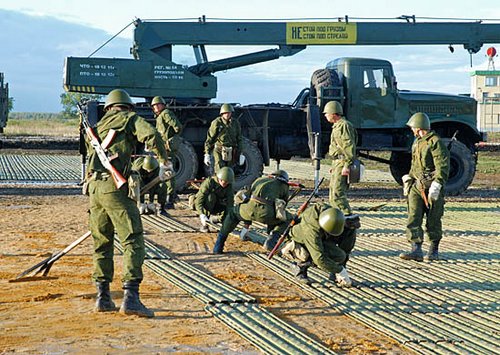
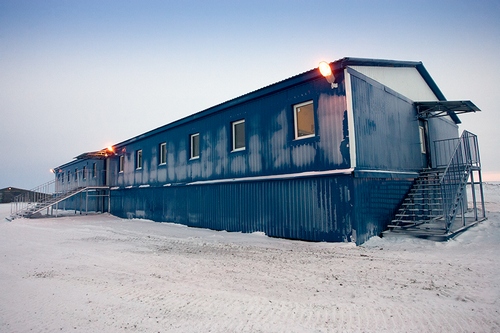
From time immemorial, a lot of all kinds of fish have been caught in the Barents Sea. It was almost the main food of the Pomors. Carts with fish were constantly going to the mainland. There are still a lot of it in these northern waters, about 114 species. But the main types of commercial fish are cod, flounder, sea bass, herring and haddock. The population of the rest is falling.
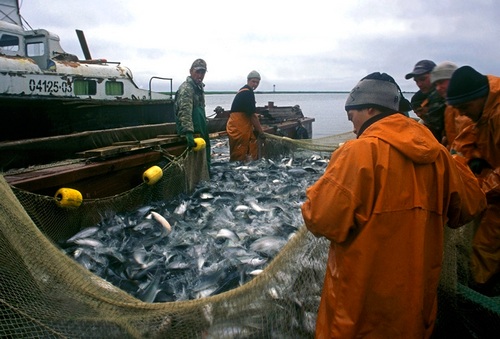
This is the result of an ownerless attitude towards fish stocks. Recently, more fish have been caught than it was reproduced. Moreover, artificial breeding of Far Eastern crabs in the Barents Sea had a negative impact on the restoration of fish mass. Crabs began to multiply so quickly that there was a threat of disruption to the natural biosystem of this region.
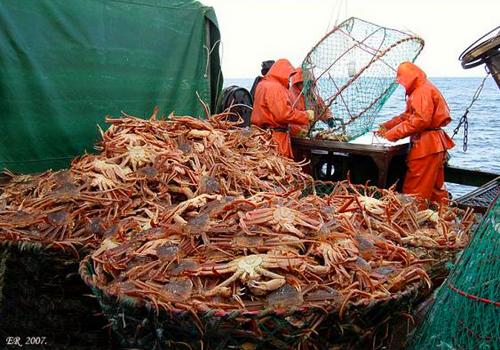
Nevertheless, in the waters of the Barents Sea, you can still find both a variety of fish and marine animals such as seals, seals, whales, dolphins, and sometimes.

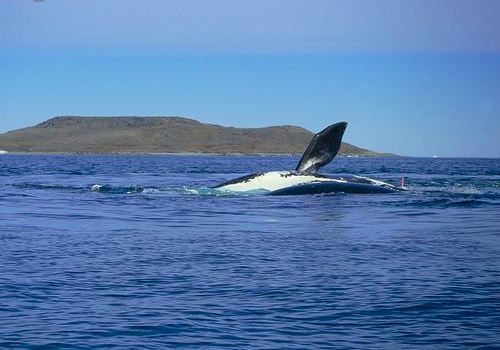
In pursuit of new oil and gas fields, oil-producing countries began to strive intensely to the north. So the water area of the Barents Sea became a place of conflict between Russia and Norway. And although in 2010 Norway and Russia signed an agreement on the division of borders in the Barents Sea, disputes still do not subside. This year, the Russian "Gazprom" began commercial oil production on the Arctic shelf. About 300 thousand tons of oil will be produced per year. By 2020, it is planned to reach the level of production of 6 million tons of oil per year.
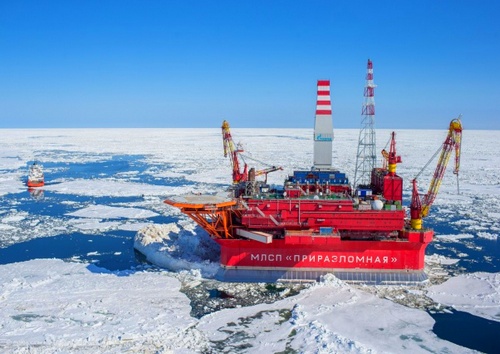
The return of the Russian Armed Forces to the Arctic could serve to settle these disputes. Russian Arctic this is the property of our people and it should be fully used for the benefit of the people and well protected from those who like to profit at someone else's expense.
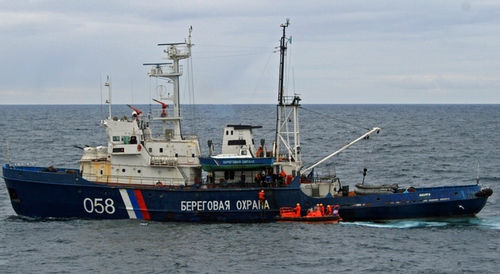
Despite the fact that the Barents Sea is the Arctic, in last years this region is becoming more and more popular for tourists, especially those who are fond of diving, fishing and hunting. Such an extreme type of recreation as ice diving is very interesting. The beauty of the ice world can surprise even experienced swimmers. For example, the swing of the claws of the Kamchatka crabs bred in the local waters sometimes exceeds 2 meters. But it must be borne in mind that diving under the ice is an activity for experienced scuba divers.
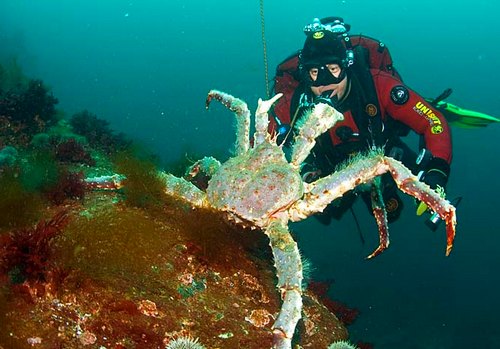
And hunting on the islands of the Barents Sea for seals, seals or birds of which are apparently not visible here, will not leave indifferent any seasoned hunter.
![]()
Any diver, fisherman, hunter or just a tourist who has visited the Barents Sea at least once will still strive to get here in order to see these northern beauties that cannot be forgotten.
Video: Barents Sea: ...
Located in the westernmost part of all Arctic seas. The Barents Sea is located in the North European shelf. The northern and western boundaries of the sea have a conditional line. The western border runs along Cape Yuzhny, Bear, and North Cape. North - along the outskirts of the islands of the archipelago, then along a number of other islands. From the southern part, the sea is bounded by the mainland and a small strait that delimits the Barents Sea from. Eastern border passes through the Vaygach Islands, and some others. The Barents Sea is a continental marginal sea.
The Barents Sea occupies one of the first places in terms of its size. Its area is 1 million 424 thousand km2. The volume of water reaches 316 thousand km3. The average depth is 222 m, the greatest depth is 600 m. In the water expanses of the Barents Sea, there are a large number of islands (Novaya Zemlya, Bear Island and others). Small islands are mostly united in archipelagos, which are located close to the mainland or with large islands. the sea is rather uneven, complicated by various capes, bays and bays. The shores that are washed by the Barents Sea have different origins and structures. The coast is Scandinavian and mostly, abruptly breaking off to the sea. West Coast islands Novaya Zemlya has. And the northern part of the island comes in contact with, some of which enter the sea.
Fishing is widely developed in the Barents Sea. From the waters of this sea cod, haddock, sea bass, herring are mined. There is a power plant near Murmansk that generates energy from. Also in Murmansk is the only ice-free port in our country, which is located in the polar zone. Thus, the Barents Sea is an important sea route connecting Russia with other countries.
The open part of the Barents Sea is slightly polluted relative to other Arctic seas. But the area where ships are actively moving is covered with film. The waters of the bays (Kola, Teribersky, Motovsky) are subject to the greatest pollution, mainly by oil products. The Barents Sea receives about 150 million m3 of polluted water. Poisonous substances constantly accumulate in the sea soil and can cause secondary pollution.
Ice fishing
The Barents Sea has clear boundaries in the south and partly in the east, in other parts of the border they pass along conventional lines drawn along the shortest distances between coastal points. The western border of the sea is the line of Cape Yuzhny (Spitsbergen) - about. Bearish - m. North Cape. Southern border the sea runs along the coast of the mainland and the line of Cape Svyatoi Nos - Cape Kanin Nos, separating it from Of the White Sea... From the east, the sea is limited by the western coast of the Vaygach and Novaya Zemlya islands and further by the line of Cape Zhelaniya - Cape Kolzat (Graham Bell Island). In the north, the sea border runs along the northern edge of the islands of the Franz Josef Land archipelago to Cape Mary Harmsworth (Alexandra Land Island) and further through the Victoria and Bely Islands goes to Cape Lee Smith on the island. North-East Land (Svalbard).
Located on the North European shelf, almost open to the Central Arctic Basin and open to the Norwegian and Greenland seas, the Barents Sea belongs to the type of continental marginal seas. This is one of the largest seas in terms of area. Its area is 1,424 thousand km 2, the volume is 316 thousand km 3, the average depth is 222 m, the maximum depth is 600 m.
There are many islands in the Barents Sea. Among them are the archipelagos of Svalbard and Franz Josef Land, Novaya Zemlya, the islands of Nadezhda, King Karl, Kolguev, etc. Small islands are mainly grouped into archipelagos located near the mainland or more large islands, for example Krestovye, Gorbovy, Gulyaevy Koshki, etc. Its complex dissected coastline forms numerous capes, fjords, bays, bays. Some parts of the Barents Sea coast belong to different morphological types of coast. The shores of the Barents Sea are mostly abrasive, but there are accumulative and icy ones. The northern shores of Scandinavia and the Kola Peninsula are mountainous and abruptly drop off to the sea, they are cut by numerous fjords. The southeastern part of the sea is characterized by low-lying, gentle shores. The western coast of Novaya Zemlya is low and hilly, and in its northern part glaciers approach the sea. Some of them drain directly into the sea. Similar shores are found on Franz Josef Land and on about. The northeastern land of the Spitsbergen archipelago.
Climate
The position of the Barents Sea in high latitudes beyond the Arctic Circle, direct connection with the Atlantic Ocean and the Central Arctic Basin determine the main features of the sea climate. In general, the sea climate is polar marine, characterized by long winters, short cold summers, low annual changes in air temperature, and high relative humidity.
Arctic air dominates in the northern part of the sea, air in the south. temperate latitudes... At the border of these two main streams, there is an atmospheric Arctic front, directed generally from Iceland through about. Bearish towards the northern tip of Novaya Zemlya. Cyclones and anticyclones are often formed here, affecting the nature of the weather in the Barents Sea.
In winter, with the deepening of the Icelandic minimum and its interaction with the Siberian maximum, the Arctic front is sharpened, which entails an intensification of cyclonic activity over the central part of the Barents Sea. As a result, a very changeable weather is established over the sea with strong winds, large fluctuations in air temperature, precipitation "charges". In this season, mainly south-westerly winds blow. In the northwest of the sea, northeastern winds are also often observed, and in the southeastern part of the sea - winds from the south and southeast. The wind speed is usually 4-7 m / s, but sometimes increases to 12-16 m / s. The average monthly temperature of the coldest month - March - is -22 ° in Svalbard, -2 ° in the western part of the sea, in the east, at about. Kolguev, -14 ° and in the southeastern part -16 °. This air temperature distribution is associated with the warming effect of the Norwegian Current and the cooling effect of the Kara Sea.
In summer, the Icelandic minimum becomes less deep, and the Siberian anticyclone is destroyed. A stable anticyclone is forming over the Barents Sea. As a result, the weather here is relatively stable, cool and cloudy with weak, mainly northeasterly, winds.
During the warmest months - July and August - in the western and central parts the sea, the average monthly air temperature is 8-9 °, in the southeastern region it is slightly lower - about 7 ° and in the north it drops to 4-6 °. Normal summer weather is disrupted by the invasion air masses from the Atlantic Ocean. At the same time, the wind changes direction to the southwest and increases to 10-12 m / s. Such incursions occur mainly in the western and central parts of the sea, while relatively stable weather continues to persist in the north.
During the transitional seasons (spring and autumn), there is a restructuring of the baric fields; therefore, unstable cloudy weather with strong and variable winds prevails over the Barents Sea. In spring, precipitation is not uncommon, falling out "charges", the air temperature rises rapidly. In autumn, the temperature decreases slowly.
Water temperature and salinity
The river runoff in relation to the area and volume of the sea is small and is equal on average to about 163 km 3 / year. 90% of it is concentrated in the southeastern part of the sea. The most large rivers The Barents Sea basin. The Pechora discharges about 130 km 3 of water in an average water content year, which is about 70% of the total coastal runoff into the sea per year. Several small rivers also flow here. The northern coast of Norway and the coast of the Kola Peninsula account for only about 10% of the runoff. Here, small mountain-type rivers flow into the sea.
The maximum continental runoff is observed in the spring, the minimum - in the fall and winter. River runoff significantly affects the hydrological conditions of only the southeastern, shallowest part of the sea, which is sometimes called the Pechora Sea (more precisely, the Pechora Sea Basin).
The decisive influence on the nature of the Barents Sea is exerted by water exchange with neighboring seas, and mainly with warm Atlantic waters. The annual inflow of these waters is about 74 thousand km 3. They bring about 177 · 10 12 kcal of heat to the sea. Of this amount, only 12% is absorbed during the exchange of waters of the Barents Sea with other seas. The rest of the heat is consumed in the Barents Sea, so this is one of the most warm seas Arctic Ocean. In significant areas of this sea from the European shores to 75 ° N lat. observed all year round positive temperature water on the surface and the area does not freeze.
There are four water masses in the structure of the Barents Sea waters.
1. Atlantic waters (from surface to bottom) coming from the southwest, from the north and northeast from the Arctic basin (from 100-150 m to the bottom). These are warm and salty waters.
2. Arctic waters entering in the form of surface currents from the north. They have negative temperatures and low salinity.
3. Coastal waters coming with continental runoff from the White Sea and with coastal current along the coast of Norway from the Norwegian Sea. In summer, these waters are characterized by high temperature and low salinity, in winter - low temperature and salinity. The characteristics of winter coastal waters are close to those of the Arctic.
4. Barents Sea waters are formed in the sea itself as a result of the transformation of Atlantic waters under the influence of local conditions. These waters are characterized by low temperatures and high salinity. In winter, the entire northeastern part of the sea from surface to bottom is filled with Barents Sea waters, and the southwestern part is filled with Atlantic waters. Traces of coastal waters are found only in the surface horizons. Arctic waters are absent. Due to intensive mixing, the water entering the sea is rather quickly transformed into the Barents Sea water.
V summer time the entire northern part of the Barents Sea is filled with Arctic waters, the central part is filled with Atlantic, and the southern part is coastal. At the same time, arctic and coastal waters occupy surface horizons. At depths in the northern part of the sea, there are Barents Sea waters, and in the south, Atlantic waters. Surface water temperatures generally decrease from southwest to northeast.
In winter, in the south and south-west, the water surface temperature is 4-5 °, in central regions 0-3 °, and in the northern and northeastern parts it is close to the freezing point.
In summer, the temperatures on the surface of the water and the air temperature are close. In the south of the sea, the surface temperature is 8-9 °, in the central part, 3-5 °, and in the north it drops to negative values. In transitional seasons (especially in spring), the distribution and values of water temperature on the surface differ little from winter ones, and in autumn - from summer ones.
The distribution of temperature in the water column largely depends on the spread of warm Atlantic waters, on winter cooling extending to a considerable depth, and on the bottom topography. In this regard, the change in water temperature with depth occurs in different areas the sea in different ways.
In the southwestern part, which is most exposed to the influence of Atlantic waters, the temperature gradually and relatively weakly decreases with depth to the bottom.
Atlantic waters spread to the east along troughs, the water temperature in them decreases from the surface to the horizon of 100-150 m, and then slightly rises to the bottom. In the northeast of the sea in winter low temperature extends to the horizon of 100-200 m, deeper it rises to 1 °. In summer, the low surface temperature drops to 25-50 m, where its lowest (–1.5 °) winter values remain. Deeper, in the 50-100 m layer, not affected by the winter vertical circulation, the temperature slightly rises and is equal to about –1 °. Atlantic waters pass through the underlying horizons, and the temperature here rises to 1 °. Thus, a cold intermediate layer is observed between 50-100 m. In the basins, where warm waters do not penetrate, strong cooling occurs, for example, in the Novaya Zemlya Trench, Central Basin, etc. The water temperature is fairly uniform throughout the entire thickness in winter, and in summer, from small positive values on the surface, it drops to about -1.7 ° at the bottom.
Seamounts impede the movement of Atlantic waters. In this regard, above the bottom rise, low water temperature is observed at horizons close to the surface. In addition, a longer and more intense cooling occurs over the hills and on their slopes than in deep regions. As a result, “cold water caps” are formed at the bottom of the upland, typical of the banks of the Barents Sea. In the area of the Central Upland, in winter, very low water temperatures can be traced from surface to bottom. In summer, it decreases with depth and reaches minimum values in the 50-100 m layer, and deeper it rises slightly again. In this season, a cold intermediate layer is observed here, the lower boundary of which is formed not by the warm Atlantic, but by the local Barents Sea waters.
In the shallow southeastern part of the sea, seasonal changes in water temperature are well pronounced from the surface to the bottom. In winter, the water temperature is low throughout the entire thickness. Spring warming up extends to horizons of 10-12 m, from where the temperature drops sharply to the bottom. In summer, the thickness of the upper heated layer increases to 15-18 m, and the temperature decreases with depth.
In autumn, the temperature of the upper layer of water begins to level out, and the distribution of temperature with depth follows the type of seas of temperate latitudes. In most of the Barents Sea, the vertical temperature distribution is oceanic.
Due to the good connection with the ocean and the low continental runoff, the salinity of the Barents Sea differs little from the average salinity of the ocean.
The highest salinity on the sea surface (35 ‰) is observed in the southwestern part, in the area of the North Cape Trench, where the salty Atlantic waters pass and there is no ice. To the north and south, salinity drops to 34.5 ‰ due to the melting of ice. The waters are even more freshened (up to 32-33 ‰) in the southeastern part of the sea, where ice melts and where fresh water flows from land. The salinity on the sea surface changes from season to season. In winter, salinity is quite high throughout the sea - about 35 ‰, and in the southeastern part - 32.5-33 ‰, since at this time of the year the influx of Atlantic waters increases, continental runoff decreases and intense ice formation occurs.
In spring, high salinity values remain almost everywhere. Only in a narrow coastal strip near the Murmansk coast and in the Kaninsko-Kolguevsky region is salinity low.
In summer, the influx of Atlantic waters is reduced, ice melts, river water spreads, so salinity decreases everywhere. In the southwestern part, the salinity is 34.5 ‰, in the southeastern part - 29 ‰, and sometimes 25 ‰.
In autumn, at the beginning of the season, salinity remains low throughout the sea, but later, due to a decrease in continental runoff and the beginning of ice formation, it increases and reaches winter values.
The change in salinity in the water column is associated with the bottom topography and with the influx of Atlantic and river waters. Mostly it increases from 34 ‰ at the surface to 35.1 ‰ at the bottom. In smaller limits, the vertical salinity changes over the seamounts.
Seasonal changes in the vertical distribution of salinity in most of the sea are rather weakly expressed. In summer, the surface layer is freshened, and from the horizons of 25-30 m, a sharp increase in salinity begins with depth. In winter, the salinity jump on these horizons is somewhat smoothed out. The salinity values change more noticeably with depth in the southeastern part of the sea. The difference in salinity on the surface and at the bottom here can reach several ppm.
In winter, salinity is almost equalized throughout the entire water column, and in spring, river waters desalinate the surface layer. In summer, its freshening is intensified also due to the melted ice, therefore, a sharp salinity jump is formed between the horizons of 10 and 25 m.
In winter, the densest waters on the surface of the Barents Sea are in the northern part. In summer, an increased density is observed in the central regions of the sea. In the north, its decrease is associated with desalination surface waters due to the melting of ice, in the south - with their warming up.
In winter, in shallow areas, the density from the surface to the bottom increases slightly. The density noticeably increases with depth in areas where deep Atlantic waters are distributed. In spring and especially in summer, under the influence of desalination of the surface layers, the density stratification of waters along the vertical is quite clearly expressed throughout the sea. As a result of autumn cooling, the density values equalize with depth.
Relatively weak density stratification at usually strong winds causes the intensive development of wind mixing in the Barents Sea. It covers here a layer of up to 15-20 m in the spring-summer time and penetrates to the horizons of 25-30 m in the autumn-winter season. Only in the southeastern part of the sea, where the vertical stratification of waters is sharply expressed, does the wind mix only the uppermost layers up to horizons of 10-12 m. In autumn and winter, convective mixing is also added to the wind mixing.
In the north of the sea, due to cooling and ice formation, convection penetrates up to 50-75 m. But it rarely extends to the bottom, since melting ice, which occurs here in summer, creates large density gradients, which prevents the development of vertical circulation.
On the bottom uplifts located to the south - the Central Upland, Goose Bank, etc. - the winter vertical circulation reaches the bottom, since in these areas the density is rather uniform throughout the entire water column. As a result, very cold and heavy waters are formed over the Central Upland. From here they gradually slide down the slopes into the depressions surrounding the upland, in particular, into the Central Basin, where cold bottom waters are formed.
Bottom relief
The bottom of the Barents Sea is a complexly dissected underwater plain, slightly inclined to the west and northeast. The deepest areas, including maximum depth sea, are located in the western part of the sea. The bottom relief as a whole is characterized by an alternation of large structural elements- seamounts and troughs with different directions, as well as the existence of numerous small (3-5 m) irregularities at depths less than 200 m and terraced ledges on the slopes. The difference in depths in the open sea reaches 400 m. The rugged bottom topography significantly affects the hydrological conditions of the sea.
![]()
Bottom and current relief of the Barents Sea
Currents
The general circulation of the Barents Sea waters is formed under the influence of the inflow of water from neighboring basins, the bottom topography and other factors. As in the neighboring seas of the northern hemisphere, the general counterclockwise movement of surface waters prevails here.
The most powerful and stable stream, which largely determines the hydrological conditions of the sea, forms the warm North Cape current. It enters the sea from the south-west and moves eastward in the coastal zone at a speed of about 25 cm / s, further offshore its speed decreases to 5-10 cm / s. At about 25 ° E this current is divided into the Coastal Murmansk and Murmansk currents. The first of them, 40-50 km wide, spreads to the southeast along the shores of the Kola Peninsula, penetrates into the White Sea Throat, where it meets the outgoing White Sea current and follows to the east at a speed of 15-20 cm / s. Kolguev Island divides the Murmansk Coastal Current into the Kaninskoe Current, which goes to the southeastern part of the sea and further to the Kara Vorota and Yugorskiy Shar straits, and the Kolguevskoe current, which runs first to the east and then to the northeast, to the coast of Novaya Zemlya. The Murmansk current with a width of about 100 km at a speed of about 5 cm / s spreads much more seaward than the Coastal Murmansk current. Near the meridian of 40 ° E, having met an increase in the bottom, it turns to the northeast and gives rise to the West Novaya Zemlya Current, which, together with a part of the Kolguev Current and the cold Litke current flowing through the Kara Gates, forms the eastern periphery of the cyclonic gyre common for the Barents Sea ... In addition to the branched system of the warm North Cape Current, cold currents are clearly expressed in the Barents Sea. The Perseus current runs along the Perseus Upland, from northeast to southwest, along the Medvezhinsky shallow water. Merging with cold waters at about. Hopefully, it forms the Medvezhinsky current, the speed of which is approximately 50 cm / s.
The currents in the Barents Sea are significantly influenced by large-scale baric fields. Thus, with the localization of the Polar Anticyclone off the coast of Alaska and Canada and with the relatively western location of the Icelandic minimum, the West Novaya Zemlya Current penetrates far to the north, and part of its waters goes into the Kara Sea. Another part of this current deviates to the west and is strengthened by waters coming from the Arctic basin ( east of the earth Franz Joseph). The inflow of surface Arctic waters, carried by the East Spitsbergen Current, is increasing.
With a significant development of the Siberian Maximum and, at the same time, a more northerly location of the Icelandic minimum, the outflow of water from the Barents Sea prevails through the straits between Novaya Zemlya and Franz Josef Land, as well as between Franz Josef Land and Spitsbergen.
The general picture of currents is complicated by local cyclonic and anticyclonic gyres.
Tides in the Barents Sea are mainly caused by the Atlantic tidal wave that enters the sea from the southwest, between the North Cape and Svalbard, and travels east. Near the entrance to Matochkin Shar, it turns partly to the northwest, partly to the southeast.
The northern edge of the sea is influenced by another tidal wave coming from the Arctic Ocean. As a result, the Atlantic and northern waves interfere with the north-eastern shores of Spitsbergen and Franz Josef Land. The tides of the Barents Sea are almost everywhere of the correct semidiurnal character, as well as the currents caused by them, but the change in the directions of tidal currents occurs differently in different regions of the sea.
Along the Murmansk coast, in the Czech Bay, in the west of the Pechora Sea, tidal currents close to reversible. In the open parts of the sea, the direction of currents in most cases changes clockwise, and on some banks - counterclockwise. The change in the direction of tidal currents occurs simultaneously in the entire layer from the surface to the bottom.
The highest speed of tidal currents (about 150 cm / s) is observed in the surface layer. High velocities are characteristic of tidal currents along the Murmansk coast, at the entrance to the White Sea Funnel, in the Kaninsko-Kolguevsky region and in the South Spitsbergen shallow water. In addition to strong currents, tides cause significant changes in the level of the Barents Sea. The height of the tide near the shores of the Kola Peninsula reaches 3 m.In the north and northeast, the tide becomes less and near the coast of Spitsbergen it is 1-2 m, and on the southern shores of Franz Josef Land it is only 40-50 cm. This is due to the peculiarities bottom topography, coastal configuration and interference of tidal waves coming from the Atlantic and Arctic oceans.
In addition to tidal fluctuations in the Barents Sea, seasonal changes in the level are also traced, mainly caused by the impact atmospheric pressure and winds. The difference between the maximum and minimum position of the average level in Murmansk can reach 40-50 cm.
Strong and prolonged winds cause surge level fluctuations. They are most significant (up to 3 m) off the Kola coast and at Spitsbergen (about 1 m), smaller values (up to 0.5 m) are observed off the coast of Novaya Zemlya and in the southeastern part of the sea.
Large spaces pure water, frequent and strong steady winds favor the development of waves in the Barents Sea. Particularly strong waves are observed in winter, when, with prolonged (at least 16-18 hours) westerly and southwestern winds (up to 20-25 m / s) in the central regions of the sea, the most developed waves can reach heights of 10-11 m. In the coastal zone waves are smaller. With prolonged northwestern storm winds, the wave height reaches 7-8 m. Starting from April, the intensity of the waves decreases. Waves 5 m and more in height are rarely repeated. The sea is most calm in the summer months, the frequency of 5-6 m storm waves does not exceed 1-3%. In autumn, the intensity of waves increases and in November approaches the winter.
Ice cover
The Barents Sea is one of the ice-covered ones, but it is the only one of the Arctic seas that, due to the inflow of warm Atlantic waters into its southwestern part, never completely freezes. Due to weak currents from the Kara Sea to the Barents Sea, ice practically does not flow from there.
Thus, local ice is observed in the Barents Sea. In the central and southeastern parts of the sea, it is annual ice that forms in autumn and winter, and melts in spring and summer. Only in the far north and northeast are old ice found, sometimes including the Arctic pack.
Ice formation in the sea begins in the north in September, in the central regions in October and in the southeast in November. The sea is dominated by floating ice, including icebergs. Usually they are concentrated near Novaya Zemlya, Franz Josef Land and Svalbard. Icebergs are formed from glaciers descending to the sea from these islands. Occasionally, icebergs are carried far to the south by currents, up to the coast of the Kola Peninsula. Usually the Barents Sea icebergs do not exceed 25 m in height and 600 m in length.
Fast ice in the Barents Sea is poorly developed. It occupies relatively small areas in the Kaninsko-Pechora region and near Novaya Zemlya, and near the shores of the Kola Peninsula it is found only in the lips.
In the southeastern part of the sea and near western shores Novaya Zemlya has preserved ice holes all winter long. Ice is most widespread in the sea in April, when it covers up to 75% of its area. Flat thickness sea ice of local origin in most areas does not exceed 1 m. The thickest ice (up to 150 cm) is found in the north and northeast.
In spring and summer, first-year ice melts quickly. In May, the southern and southeastern regions are free of ice, and by the end of summer, almost the entire sea is cleared of ice (with the exception of the regions adjacent to Novaya Zemlya, Franz Josef Land and the southeastern shores of Spitsbergen).
The ice cover of the Barents Sea varies from year to year, which is associated with the different intensity of the North Cape Current, with the nature of large-scale atmospheric circulation and with a general warming or cooling of the Arctic as a whole.
Economic value
There are about 110 fish species in the Barents Sea. Their species diversity is rapidly decreasing from west to east, which is associated with a decrease in air and water temperatures, increased severity of winter and ice regime. The most widespread and diverse are cod, flounder, eelpout, goby and other species. A little more than 20 species are used by the fishery, the main of which are haddock, Arctic cod, sea bass, cod, herring, capelin.
In the Barents Sea, there has been a very intensive fishery for several decades. Until about the beginning of the 70s. large quantities (hundreds of thousands of tons) were caught cod, sea bass, and in smaller but significant quantities halibut, catfish, herring, capelin, and others were caught. Excessive fishing of the most valuable fish species led to a reduction in their stocks and a sharp decline in catches.
At present, the fishing of valuable fish species in the sea is regulated, which positively affects the stocks of cod, perch, haddock and some others. Since 1985, there has been a tendency towards the restoration of their numbers.




